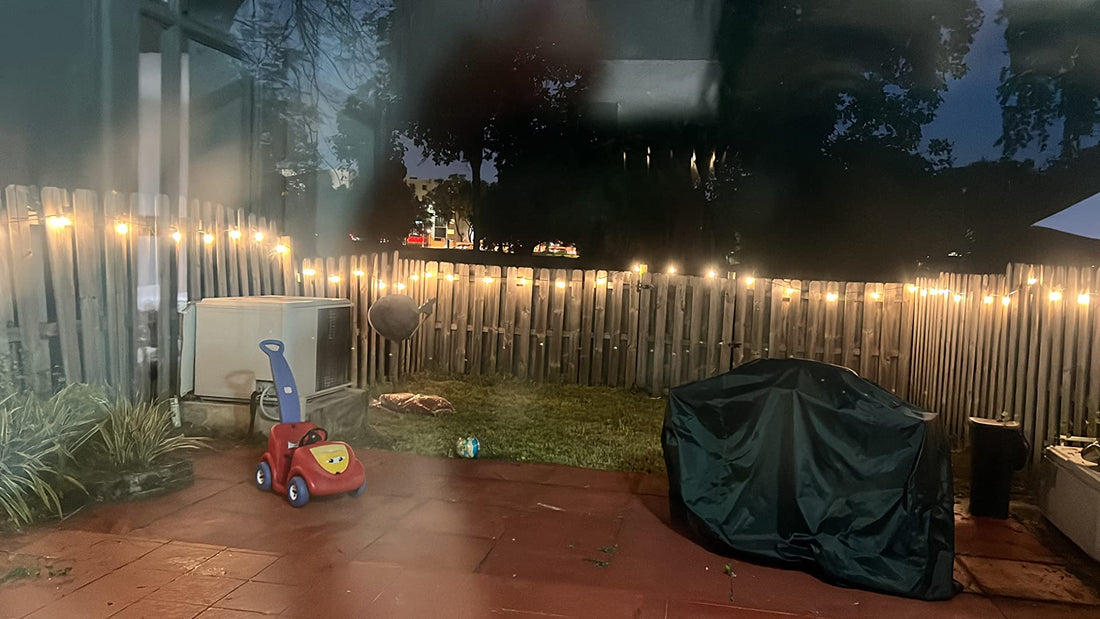
Camping String Lights: Your Ultimate Guide to Outdoor Illumination
Camping is an adventurous way to explore nature, and having the right lighting can significantly enhance your outdoor experience. Camping string lights are an essential addition to your camping gear, providing both practical illumination and a cozy ambiance around your campsite. Whether you're setting up for a weekend getaway, a hiking trip, or a long summer camping experience, these lights can make a huge difference.
In this article, we’ll dive into everything you need to know about camping string lights, including their types, benefits, and how to use them effectively to brighten up your outdoor adventures.
What Are Camping String Lights?
Camping string lights are portable, lightweight lights designed to be used in outdoor environments like campsites, tents, RVs, and hiking expeditions. These lights typically feature a series of small bulbs or LED lights strung together on a flexible wire or cord. The most common types use LED technology because of its energy efficiency and long lifespan.
Types of Camping String Lights
1. LED Camping String Lights
- Energy-Efficient: LED string lights consume less power, making them ideal for camping when you want to conserve battery life.
- Long-lasting: They can last for tens of thousands of hours, making them durable and reliable for long camping trips.
- Low Heat Output: LED bulbs don’t heat up like traditional bulbs, reducing the risk of fire hazards.
2. Solar-Powered Camping String Lights
- Eco-Friendly: Solar-powered lights rely on the sun’s energy, making them an excellent choice for sustainable outdoor lighting.
- Battery-Free: Once fully charged by the sun, these lights can last through the night, offering a hassle-free lighting solution.
- Perfect for Remote Locations: Ideal for campsites where access to electricity is limited or non-existent.
3. Battery-Powered Camping String Lights
- Portable and Convenient: These lights are powered by replaceable or rechargeable batteries, offering a portable solution for campsites with no electricity.
- Ideal for Shorter Trips: Battery-powered string lights are perfect for weekend camping trips where a small, reliable light source is all that’s needed.
4. USB-Rechargeable Camping String Lights
- Versatile: These lights can be charged using a portable power bank, making them perfect for long trips where you don’t have access to outlets.
- Rechargeable: They are eco-friendly and cost-effective since they eliminate the need for disposable batteries.
Benefits of Using Camping String Lights
1. Adds Ambience to Your Campsite
- String lights can instantly transform a regular campsite into a cozy, well-lit area perfect for relaxation or socializing.
2. Increased Safety
- Having ample lighting around your tent, campfire, or kitchen area reduces the risk of accidents, such as tripping over equipment or camp gear in the dark.
3. Versatile and Easy to Use
- Whether you're hanging them inside your tent, wrapping them around trees, or setting them up in your camp kitchen, string lights are easy to install and move around.
4. Energy-Efficient
- LED camping lights are designed to consume minimal power, extending the life of your batteries or solar power and ensuring your lights stay on throughout the night.
5. Multi-Functional Lighting
- Camping string lights can be used not only for illumination but also as a decorative addition to your campsite. Many models come with adjustable brightness, allowing you to control the level of lighting based on your needs.
How to Choose the Best Camping String Lights
When selecting the ideal string lights for your camping trip, consider the following factors to ensure you get the most out of your investment:
1. Light Source
- LED lights are the most energy-efficient and durable option for camping.
- Solar-powered lights are great for sustainability and off-grid camping, while battery-powered lights are ideal for short trips.
2. Length of the String
- The length of the string determines how far you can spread the lights around your campsite. For larger tents or a wide campsite, opt for longer strings (15-30 feet). For smaller setups, 10 feet should suffice.
3. Brightness and Lumens
- Check the lumens (brightness) of the string lights. For ambient lighting, 50 to 100 lumens should be sufficient, but if you need brighter light for tasks like cooking or reading, go for 200-300 lumens.
4. Battery Life
- Ensure the string lights have sufficient battery life to last through the night. Solar-powered lights often last up to 8-10 hours, while battery-powered ones may last 4-8 hours depending on the battery capacity.
5. Durability
- Look for string lights that are waterproof, weather-resistant, and shockproof, especially if you plan on camping in wet or rugged environments.
6. Portability
- Lightweight and compact designs are best for camping as they take up less space in your gear bag and are easy to carry.
Where to Use Camping String Lights
1. Inside Your Tent
- Hang the string lights inside your tent for a soft glow that provides enough illumination without disturbing your sleep. It can also help you find your gear in the dark.
2. Around Your Campsite
- Wrap the lights around nearby trees, bushes, or fences to define your campsite and add some personality. You can also line your tent entrance or use them to create a welcoming space.
3. Camp Kitchen Area
- Use string lights to illuminate your cooking space, making it easier to prepare meals even after the sun sets.
4. Outdoor Recreation Areas
- If you have a campfire circle, porch, or sitting area, string lights can enhance the atmosphere and allow you to enjoy the outdoors longer.
Setting Up Camping String Lights
1. Plan Your Layout
- Before you set up your lights, consider the layout of your campsite and where you’ll need the most light. Focus on areas where you’ll spend the most time, like the cooking area, campfire, or tent.
2. Use Hooks or Clips
- Use hooks or clips to hang your string lights in strategic spots like tree branches or tent poles. This keeps the lights off the ground and safe from dirt and damage.
3. Don’t Overdo It
- While string lights can add a magical touch, avoid using too many lights, as it can create unnecessary clutter and consume power quickly.
Tips for Maximizing Battery Life
1. Use a Timer
- Some string lights come with timers or remote controls, allowing you to set them to turn off after a certain period, conserving battery life.
2. Use a Solar Charger
- If you're using battery-operated lights, consider a portable solar charger to recharge your batteries during the day.
3. Opt for Low Brightness
- Dim the lights when you don’t need maximum brightness. This will save energy and ensure the lights last longer.
Camping string lights are a fantastic way to light up your outdoor adventures, offering both functional and aesthetic benefits. Whether you prefer solar-powered, battery-operated, or LED string lights, they are essential for adding ambiance, ensuring safety, and creating a memorable camping experience. With their versatility, energy efficiency, and ease of use, camping string lights should be a staple in your outdoor gear.
FAQs About Camping String Lights
1. How long do camping string lights last?
The lifespan of camping string lights depends on the type of light. LED lights can last up to 25,000 hours, while solar-powered lights will typically last for 8-10 hours on a full charge.
2. Can I use camping string lights in the rain?
Yes, if they are waterproof or weatherproof. Be sure to check the IP rating for protection against moisture.
3. Are camping string lights bright enough to cook by?
Yes, but it depends on the brightness of the lights. Look for lights that offer 300 lumens for better visibility.
4. Can I hang string lights inside my tent?
Absolutely! String lights are perfect for inside your tent, creating a cozy and well-lit environment without the harshness of overhead lighting.
5. How do I charge my solar-powered camping string lights?
Place the lights under direct sunlight during the day to allow the solar panel to charge the batteries. This will ensure they have enough power for the evening.









